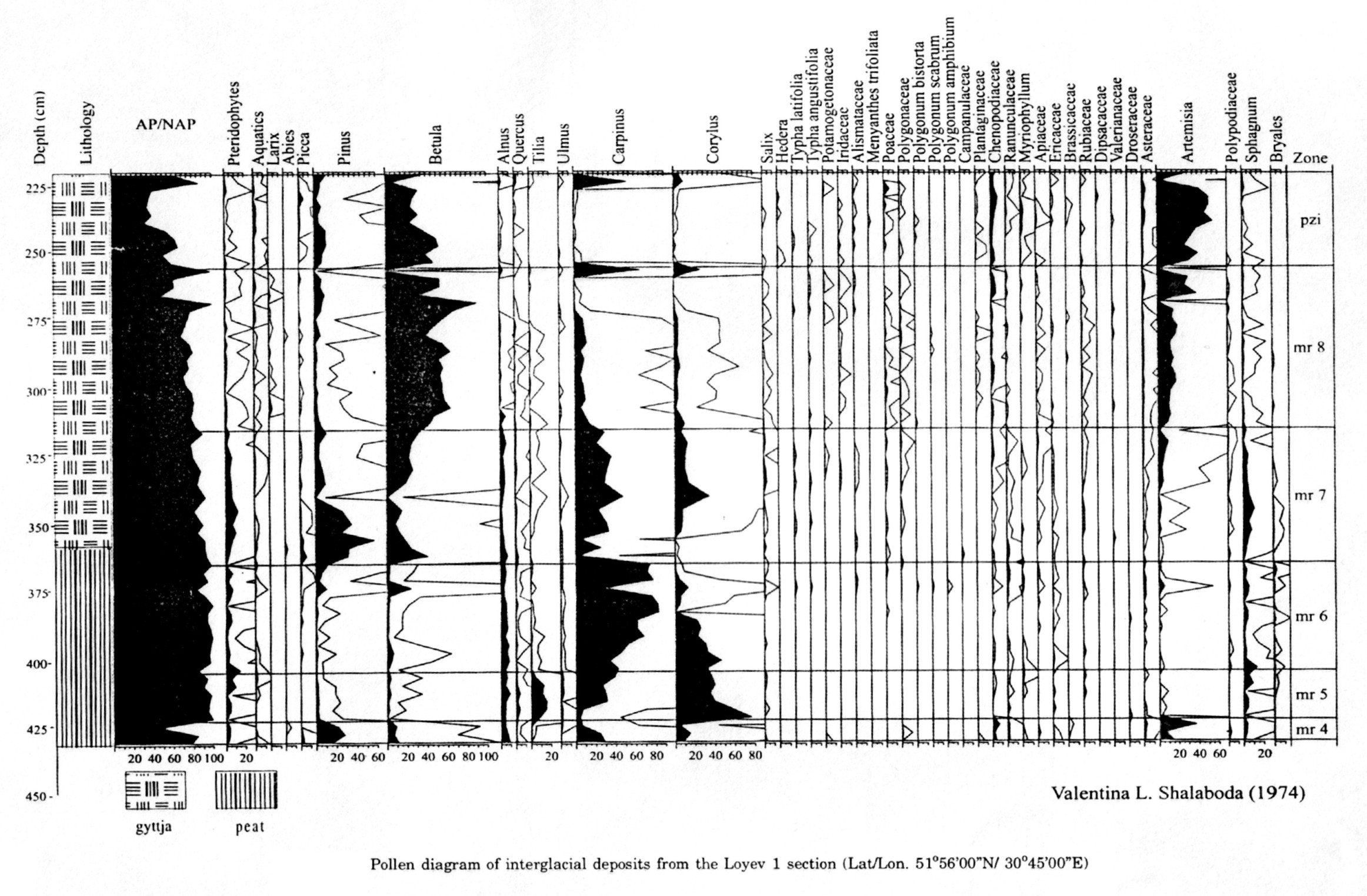Лоев 1
Spore-pollen analysis revealed the regional features of the vegetation communities forming. The percentages of all the AP and NAP taxa have been calculated of the total pollen sum AP+NAP (AP = pollen sum of trees and shrubs; NAP = pollen sum of upland herbs). The percentages of the pteridophytes and aquatics have been calculated of the total pollen sum. Indication of the pollen zones has been fulfilled according to the scheme of Makhnach et al. (1981) with some corrections based on more recent investigations.
DESCRIPTION OF THE POLLEN ZONES
MURAVIAN (=EEMIAN, MIKULINSKI) INTERGLACIAL
mr4 — Quercus-Pinus-Corylus
Maximum of Quercus along with an increasing percentages of Corylus and decreasing participation of Pinus is a common feature of this zone over the whole study area.
mr5 — Corylus-Tilia-Alnus
Arboreal species dominate while the herb plants are few. Synchronous maxima of Tilia and Alnus, preceded by the maximum of Corylus are characteristic of this zone. In most sections these events take place against a background of an increasing role of Carpinus. In Loyev 1 this zone is also not thick and a Tilia maximum is insignificant, being attended by decrease of Pinus and Quercus. Content of Alnus and Betula is poor. Carpinus has low values in Loyev 2 but in Loyev 1 its values exceed 40%.
mr6 — Carpinus
The principal feature of this zone is the maximum of Carpinus, the presence of Picea and, increase of its percentage by the end of the zone. In Loyev 1, values of Alnus and Betula are permanent, Picea appears for the first time and then becomes more abundant in spectra while the portion of Corylus decreases. Arboreal pollen prevails. A low portion belongs to spores of which Sphagnum and Polypodiacae dominate.
mr7 — Pinus-Carpinus-Corylus I Pinus-Co-rylus-Quercus-Carpinus
This zone is characterized by the maximum of Pinus and by the second (small) peak of Carpinus. In Loyev 1, Betula, Picea, Corylus and Alnus are present, sporadic grains of Quercus and Ulmus are met, and the NAP values (Artemisia, Ericaceae and Chenopodiaceae) are enough high. Sphagnum and Polypodiaceae prevail among spores.
mr8 — Betula — NAP
This zone can be seen only in two sites. Its peculiar feature is a high content of Betula and the NAP accompanied by still preserved role of the broad-leaved species, and by the first appearance of Larix.
POOZERSK1 (=VISTULIAN, VALDANSK1) EARLY GLACIAL
pzs — NAP — Betula
High percentages of Betula in combination with NAP are characteristic of the zone. Pollen of the broad-leaved trees is rare.
Shalaboda V.L. Characteristic features of Muravian (Eemian) pollen succession from various regions of Belarus // Acta Paleobotanica. 41(1). 2001. Pp. 27-41.

